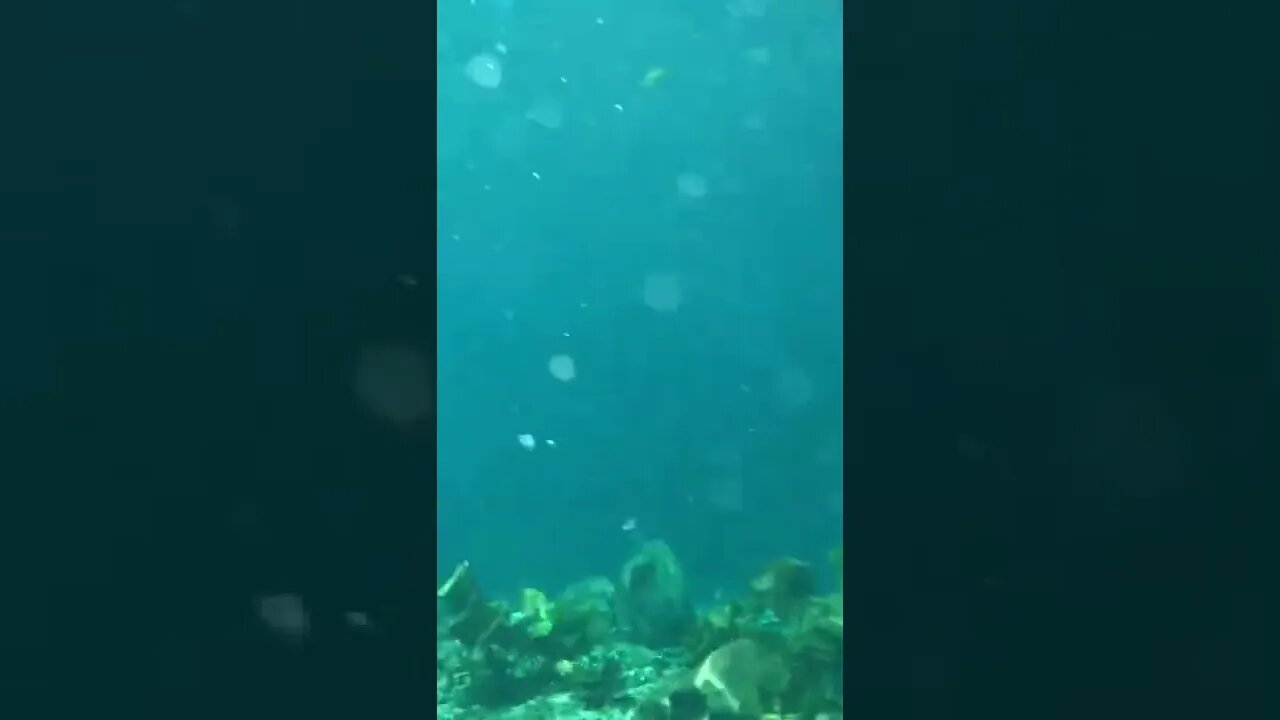Premium Only Content

UNDERWATER! Cenote Xlacah in Mérida, Mexico #cenote #xlacah #dzibilchaltun #shorts
This natural swimming hole was amazing and seemed to have no bottom. Crystal clear water, fish all around. This was a great trip for our 2nd anniversary. And yes I hold my nose underwater.
WHILE THE MAJORITY OF CENOTES—WATER-FILLED sinkholes that dot the Yucatán Peninsula—are dramatically located underground, a few are at ground level. The Xlacah cenote is one such place, making it one of the few swimming holes where you can go for a dip while looking out over Maya ruins.
The Xlacah cenote is located in the middle of the archaeological zone of Dzibilchaltún, and it’s believed to have been the main freshwater source for the ancient Maya inhabitants of the city. The story of Dizibilchaltún began around 500 BC when the first populations settled here, partly enticed by the presence of the cenote, which was an endless source of freshwater. The surface area of the pool is only part of a large water system that encompasses underground tunnels and a maximum depth of almost 150 feet. The ancient city reached its apex between the third and sixth centuries, and during this period many wells were dug throughout the area.
Notable among the Maya architecture at the site is the presence of a Spanish open chapel. These open chapels were commonly built out of rubble taken from indigenous temples in order to establish the dominance of Christianity over the native pre-Hispanic beliefs. Dzibilchaltún’s open chapel is one of the oldest found in Mexico, dating back to 1592.
Xlacah has been explored by a few diving expeditions, the first in 1956. During these explorations, archaeological vestiges such as carved bones, clay fragments, and wooden artifacts were found. It is clear from these finds that Xlacah, like many other cenotes in the Yucatán, not only served a practical role for its freshwater but was also part of the belief systems and cosmogony of the local inhabitants.
Know Before You Go:
The Xlacah cenote (also spelled Xlakah) is located inside the Dzibilchaltún Archaeological Site, near Mérida. The site is open daily (except holidays) from 8 a.m. to 5 p.m. Access costs differ for Mexican citizens with ID (MXN $97) and foreigners (MXN $120). A population of small fish lives in the cenote. Similar to those in fish spas, they are prone to biting softly to feed on dead skin cells. To maintain the ecosystem of the cenote, it is strongly advised to only use biodegradable skin products if going for a dip.
[ source: https://www.atlasobscura.com/places/cenote-xlacah ]
⬇️ _*SEE ALSO*_ ⬇️
🏠 _https://wadesworld.tv_
💲 _https://patreon.com/wadesworldtv_
🔗 _https://facebook.com/wadesworldonline_
🔗 _https://instagram.com/wadesworldtv_
🔗 _https://tiktok.com/@wadesworld.tv_
🔗 _https://twitter.com/wadesworldtv_
🫶 *Thank you for supporting the channel!* 🫶
-
 46:10
46:10
Members Club
17 hours agoThe WNBA Has Demands, TSA Loosens Up, and NYC Has a Whale Whisperer - MC04
1.17K -
 1:35:15
1:35:15
Man in America
13 hours ago🚨 ALERT: Hospitals in the U.S. Are KILLING Patients… for Their Organs!
73K30 -
 8:00
8:00
DropItLikeItsScott
13 hours agoIs This The BEST SIG P365? SIG P365 FUSE
1.12K -
 11:55
11:55
The Shannon Joy Show
12 hours ago🔥Babies Aborted for Cash.🔥
2.14K -
 6:24
6:24
Zach Humphries
13 hours agoBreaking Crypto News on Crypto Regulation!
3.92K2 -
 15:41
15:41
BaldBrad
14 hours agoDeclassified BOMBSHELL: CIA Lied About Trump-Russia! Putin Never Backed Trump | Russiagate Exposed
3.67K4 -
 13:07
13:07
Nate The Lawyer
16 hours ago $0.70 earnedWNBA Loses $500M But Players Want More Money. $40M Lost Last Year.
5.49K6 -
 11:43
11:43
Zoufry
17 hours agoThe McDonald's Ice Cream Machine Conspiracy
5.19K2 -
 14:54
14:54
DeVory Darkins
1 day ago $4.97 earnedTrump just announced MAJOR TRADE deal as CNN confronts Khalil over gaza
13.2K48 -
 2:09:26
2:09:26
Side Scrollers Podcast
19 hours agoSplitgate 2 Reverses Course, Ubisoft Failures, RIP Julian LeFay | Side Scrollers
101K5